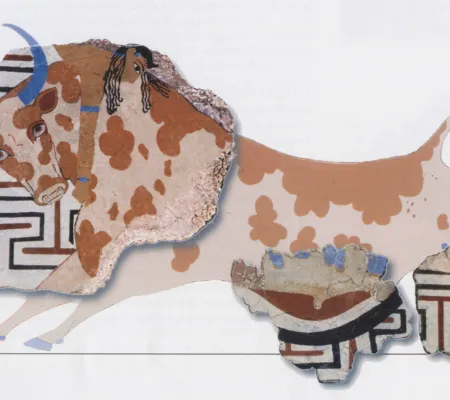The discovery of thousands of fragments of Minoan wall paintings at the Egyptian Tell el-Dab‘a (Avaris) in the 1990s was a great archaeological sensation. This first unequivocal case of a foreign culture’s deep impact on Egyptian imagery during the heyday of the pharaonic empire around the middle of the second millennium BCE still puzzles archaeologists on both sides of the Mediterranean. The current debates on the historical explanation of the wall paintings revolve around the traditional questions of context, chronology, style and provenance. This rather traditional questionnaire fails however to do justice to the high historical value and complexity of this phenomenon. The present lecture strives to adopt a different interpretative lens for understanding the Tell el-Dab‘a frescoes and transcultural processes in the Late Bronze Age Eastern Mediterranean in general. Based on some recent theoretical models, the main objective of this approach will be: a) to analyse the frescoes from the perspective of the basic triangle of viewer/image/perception and b) to compile a coherent matrix of methodological determinants that may help us to explore the wall paintings’ meaning and perceptual conditions.
Diamantis Panagiotopoulos is Full Professor of Greek Archaeology at the University of Heidelberg. He has studied archaeology, history and Egyptology at the Universities of Athens and Heidelberg and obtained his doctorate degree from the Faculty of Philosophy, University of Heidelberg. He was postdoctoral researcher at the Universities of Oxford and Salzburg (1998-2002), before being appointed professor at the Institute of Classical Archaeology, University of Heidelberg (2003). He has co-directed the Zominthos excavation from 2005 to 2007 and is currently leading the interdisciplinary research project at Koumasa (south Crete), aiming at the comprehensive study, reconstruction, and sustainable development of an archaeological landscape in a marginal Mediterranean region. He has extensively published on funerary ritual, the social structures of Minoan and Mycenaean civilisations, sealing practices, visual language, and the interconnections between the Aegean and the Near East in the second millennium BCE. He is currently acting director of the Institute of Classical Archaeology, University of Heidelberg and the Heidelberg Corpus of Minoan and Mycenaean Seals.


